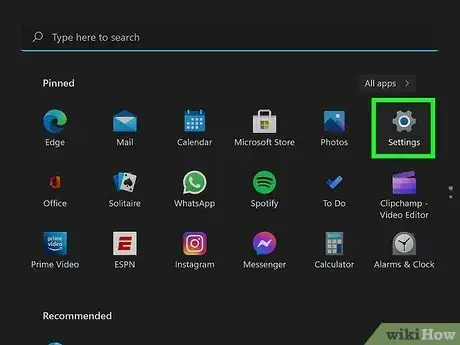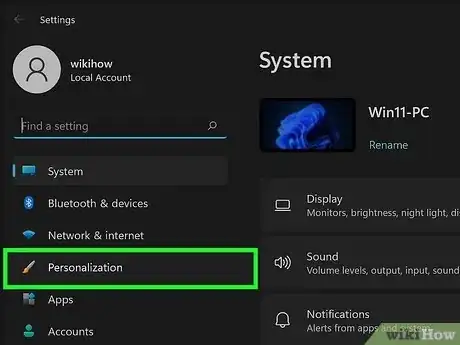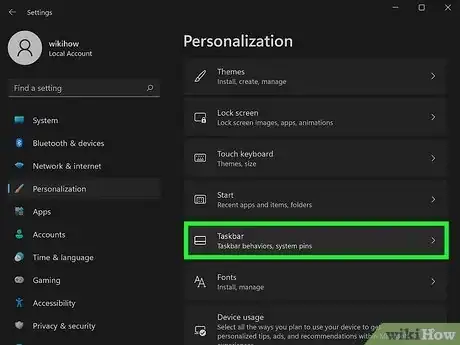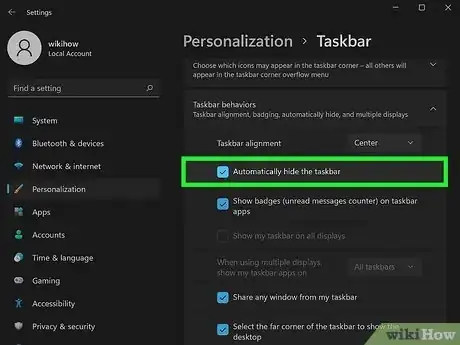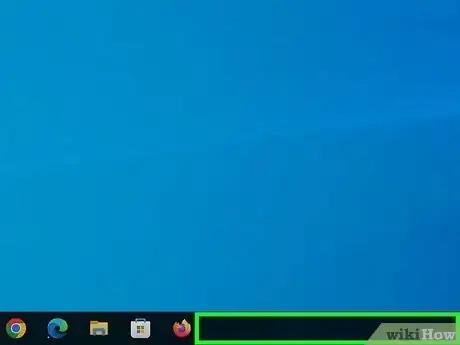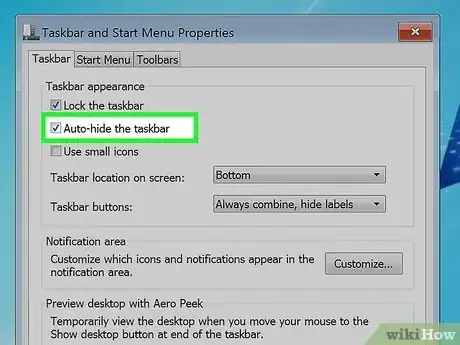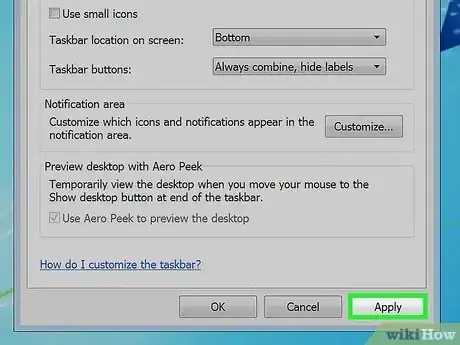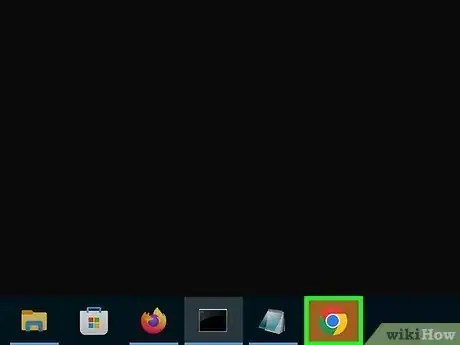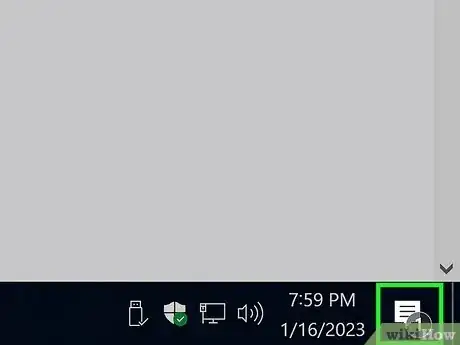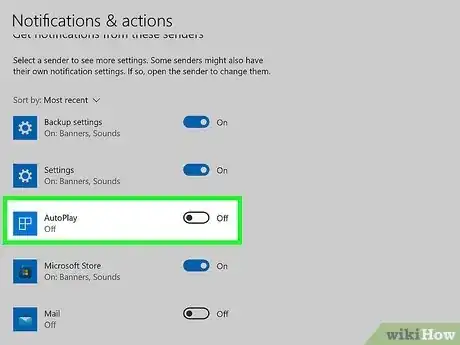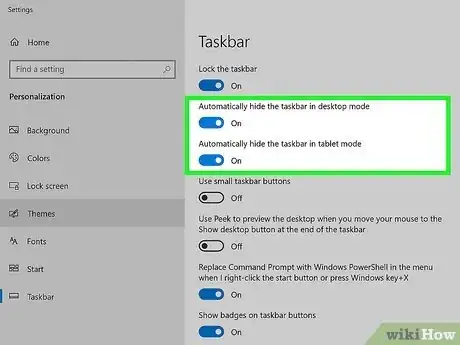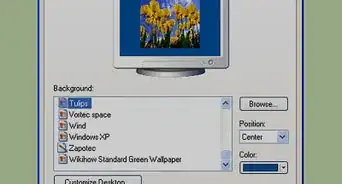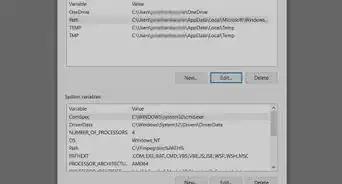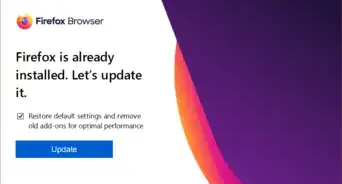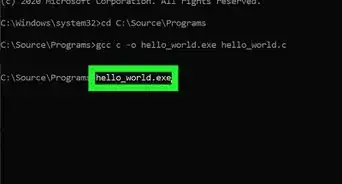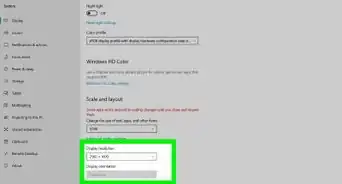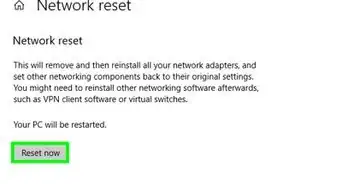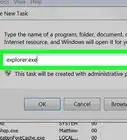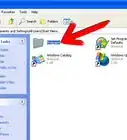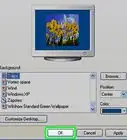This article was co-authored by wikiHow staff writer, Rain Kengly. Rain Kengly is a wikiHow Technology Writer. As a storytelling enthusiast with a penchant for technology, they hope to create long-lasting connections with readers from all around the globe. Rain graduated from San Francisco State University with a BA in Cinema.
The wikiHow Tech Team also followed the article's instructions and verified that they work.
This article has been viewed 580,477 times.
Learn more...
If you want more space on your computer or laptop background, you can hide the Windows taskbar when you're not using it. You can do this from the Settings menu in Windows 10 and 11, or you can use the taskbar's Properties in older versions. This wikiHow will show you how to remove and hide the taskbar in Windows 8, 10, and 11.
Things You Should Know
- On Windows 11, click "Start" → "Settings" → "Personalization" → "Taskbar" → "Taskbar behaviors" → toggle on "Automatically hide the taskbar".
- On Windows 10, right-click the taskbar and click "Taskbar settings". Toggle on "Automatically hide the taskbar in desktop mode".
- With Windows 8, go to "Properties". Check "Auto-hide the taskbar".
Steps
Using Windows 11
-
1Click the "Start" menu. This is the Windows logo at the bottom center of your screen. Windows 11 offers plenty of other customization features, such as a modernized design and personalized newsfeed.[1]
- A pop-up menu will open.
-
2Click Settings. This is the cog icon.
- Alternatively, you can right-click the Windows logo and select Settings.
Advertisement -
3Click Personalization. You can find this underneath Network & internet.
-
4Click Taskbar. You may need to scroll down to find this option.
-
5Click Taskbar behaviors. This can be found towards the bottom of the screen. Clicking it will expand the options.
-
6Check the box next to "Automatically hide the taskbar". The taskbar will disappear.
- When you move your cursor towards the bottom of your screen, the taskbar will pop up for use.
Using Windows 10
-
1Right-click the taskbar. The taskbar is located at the bottom of the screen.[2]
-
2Click Taskbar settings. This is the very last option on the bottom.
- Alternatively, you can click the Start menu, click Settings → Personalization → Taskbar.
-
3Toggle on "Automatically hide the taskbar in desktop mode". The taskbar will disappear. If you have a 2-and-1 tablet such as a Microsoft Surface, you can also toggle on Automatically hide the taskbar in tablet mode.
- When you move your cursor towards the bottom of your screen, the taskbar will pop up for use.
- If desired, you can also change the taskbar position.
Using Windows 8, 7, and Vista
-
1Right-click the taskbar and select "Properties." If you're using Windows 8, select "Desktop" from the Start menu or press the Windows key + D first to open the desktop view.
-
2Check the "Auto-hide the taskbar" box. You'll find this in the "Taskbar" tab.
-
3Click Apply. You'll see the taskbar disappear. You can click "OK" to close the menu, or adjust further settings.
- When you move your cursor towards the bottom of your screen, the taskbar will pop up for use.
- If you're having trouble hiding the taskbar, follow the next section for troubleshooting tips. You can also update to Windows 10.
Troubleshooting
-
1Check for programs keeping the taskbar open. If a program is flashing in the taskbar, it won't close. Clicking the flashing program will switch to the program and stop it from trying to notify you.
-
2Check the icons in your system tray. The system tray can be found in the lower-right corner of the screen, next to the clock. Like the programs in your taskbar, icons in your system tray may be keeping the taskbar open when trying to notify you. Click the icon with the notification to see what the program needs.[3]
- The program icon may be hidden. Click the arrow to the left of the row of icons to see any hidden icons.
-
3Disable notifications for specific programs. If you're constantly having to dismiss notifications, or if a notification won't go away and the taskbar is stuck on, you can try disabling all notifications.
- Windows 11: Click the Start menu and select "Settings". Select "System" and then "Notifications". Toggle the notifications off for specific apps, or toggle them all off at the top of the list.
- Windows 10: Click the Start menu and select "Settings." Select "System" and then "Notifications & actions." Toggle the notifications off for specific apps, or toggle them all off at the top of the list.
- Windows 8, 7, and Vista: Click the Expand arrow next to your system tray icons, then click "Customize." Find the app you want to disable notifications for and select "Hide icon and notifications."
-
4Try to reapply the settings. Sometimes toggling the auto-hide feature off and the on again will fix a taskbar that won't go away. Open the Settings (Windows 10 and 11) or Properties window again and turn the auto-hide feature off. Click "Apply" in Windows 8 and earlier versions. Once you've turned it off, toggle it back on again and apply the settings.
-
5Reset Windows Explorer. This is the user interface for Windows, and resetting it may fix your taskbar issues.[4]
- Hold CTRL + Shift and right-click the taskbar.
- Select "Exit Explorer" from the menu. Your taskbar and all of your icons and folders will disappear.
- Press CTRL + Shift + ESC to open the Task Manager.
- Click "File" → "Run new task."
- Type "explorer" and press Enter. This will reload explorer.
Community Q&A
-
QuestionHow do I get rid of the space at the top of my screen where the taskbar used to be?
 Community AnswerIf there is a blank white or colored space after your taskbar tucks itself away, it is likely a glitch, so you should restart your device.
Community AnswerIf there is a blank white or colored space after your taskbar tucks itself away, it is likely a glitch, so you should restart your device. -
QuestionHow can I make my taskbar disappear when it is in the way?
 Community AnswerRight click the taskbar and choose "Properties". In the menu that opens, click the option that says "Auto-hide the taskbar". This will cause the taskbar to disappear until you mouse over where it is on the screen.
Community AnswerRight click the taskbar and choose "Properties". In the menu that opens, click the option that says "Auto-hide the taskbar". This will cause the taskbar to disappear until you mouse over where it is on the screen. -
QuestionWhy does the task bar remain visible even with the hide button selected?
 Community AnswerIf there is some sort of "urgent" pop-up, like another application, open and re-minimize your current tasks. If this does not work, look toward the left side of the task bar. There should be a little arrow to expand. Click it, and check if there is anything there. It most likely will be that Java needs to be updated.
Community AnswerIf there is some sort of "urgent" pop-up, like another application, open and re-minimize your current tasks. If this does not work, look toward the left side of the task bar. There should be a little arrow to expand. Click it, and check if there is anything there. It most likely will be that Java needs to be updated.
References
- ↑ https://support.microsoft.com/en-us/windows/how-to-use-the-taskbar-in-windows-0657a50f-0cc7-dbfd-ae6b-05020b195b07#WindowsVersion=Windows_11
- ↑ https://support.microsoft.com/en-us/windows/how-to-use-the-taskbar-in-windows-0657a50f-0cc7-dbfd-ae6b-05020b195b07
- ↑ http://www.thewindowsclub.com/auto-hide-taskbar-windows
- ↑ http://www.howtogeek.com/howto/31779/fixing-when-the-windows-taskbar-refuses-to-auto-hide-correctly/

